Charles Waldheim
Princeton University Press, 2016
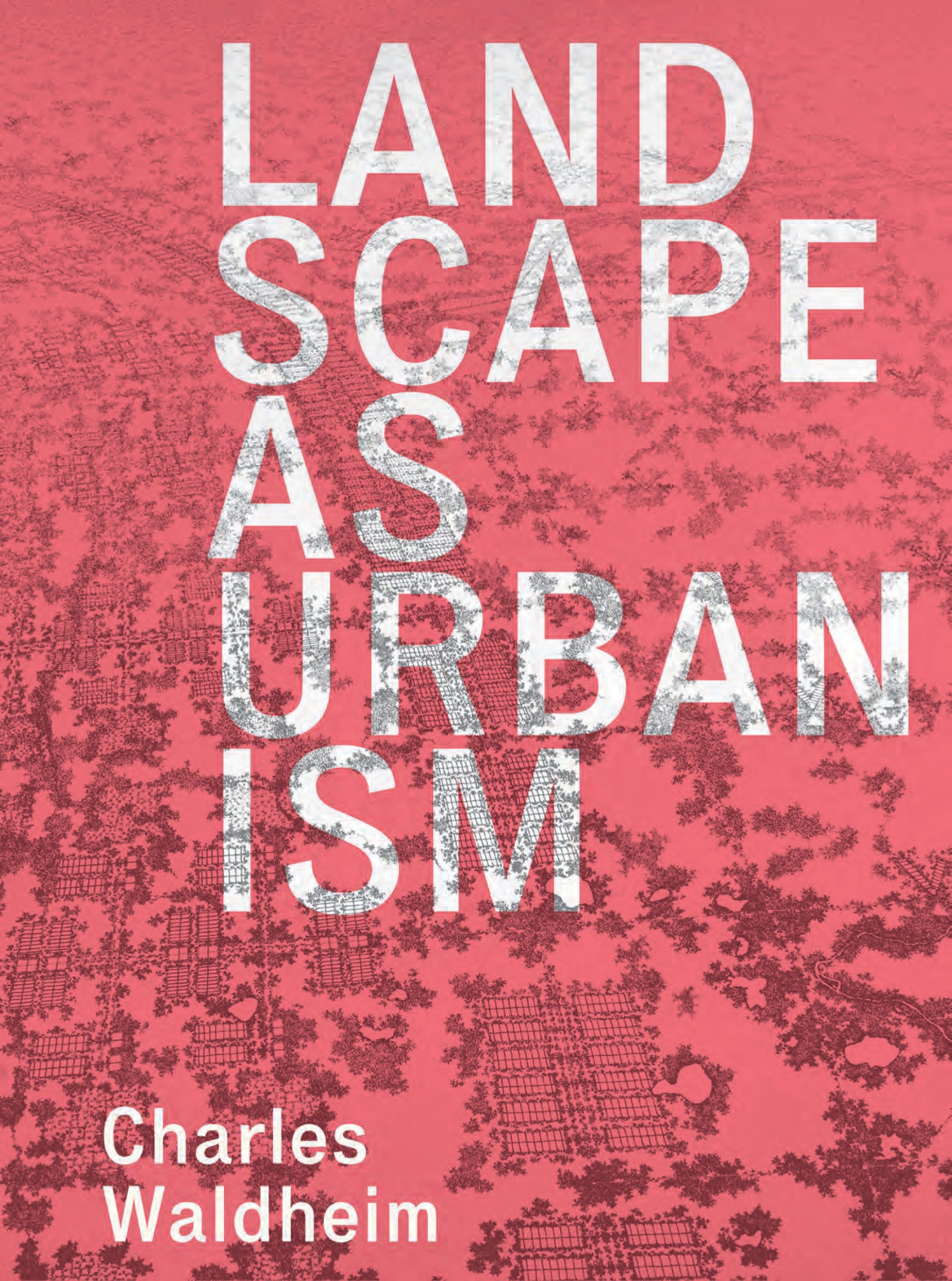
In this unusual time, it has become essential to call out arguments that propagate falsehoods or promote gratuitous attacks on people who disagree. Similarly, we must question arguments that erase the agency of underrepresented groups or claim that empirical science doesn’t matter. Reviews of books can be an important part of this effort to track and question tactics that undermine meaningful debate. It is in that spirit that this review is significant to me.
The idea of landscape urbanism has engaged many thoughtful people, offering a vision of urban design that uses ecological processes as a primary source of strategies. It engaged practitioners and teachers in architecture and landscape architecture to explore their shared interests in processes and programming of urban space. Landscape as Urbanism represents an opportunity for Charles Waldheim to more richly develop the original idea.
The book contains nine essays that cover a sweeping mix of subjects, framed by brief introductions and conclusions. Two essays deal with the state of landscape as a discipline, making a series of assertions almost completely dependent on quotes from Waldheim’s mentor, James Corner, regarding the relationship of landscape to urbanism and ecology. Next, Waldheim tries to separate empirically based ecological planning from what he considers the future of process-based urban landscape design, using examples of designs by Corner, West 8, Michael Van Valkenburgh, and a few others.
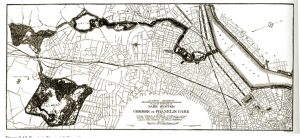
An essay on logistical systems and economic change sets up Waldheim’s use of Detroit to represent contemporary urban spatial relationships, followed by a chapter linking the historical development of Detroit to seventeenth-century landscape painting, and a chapter on Ludwig Hilberseimer’s planning work. He follows this with an essay that discusses Hilberseimer’s plans in relation to Wright’s Broadacre City proposal, Andrea Branzi’s explorations of cities as unending fabrics, and processes of decentralization.
Next, Waldheim collages ideas and anecdotes about aerial photography, digital mapping, and design of airport landscapes as examples of landscape processes. His final essay makes the most sweeping claim of all, using nineteenth-century disagreements about the name of the discipline as the basis for a call to redefine and replace landscape architecture with landscape urbanism. Ironically, the author uses Kongjian Yu’s work to imply that this is necessary, when Yu was trained in precisely the kind of empirical ecological planning that Waldheim claims can be replaced satisfactorily by treating ecology as a metaphor in urban design. A closing essay, titled “From Landscape to Ecology,” is used to claim performative value for landscape urbanism, and assert its “ecological” basis.
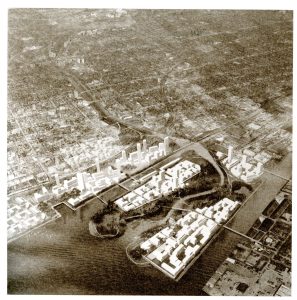
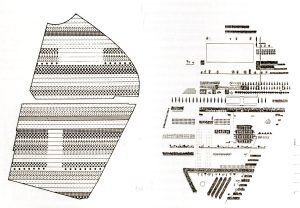
Waldheim can certainly construct a smoothly persuasive sentence and demonstrates a convincing mastery of the elements of design history from an architectural perspective. But his writing can also be strikingly misleading. He juxtaposes fact-based passages with quotes, undefined terms, and anecdotes that have been cherry-picked to justify sweeping claims. The essays deploy a kind of prose collage as a rhetorical strategy. Never in the book does the author perform the essential intellectual work of questioning his arguments using the writing of others. And when Waldheim makes normative claims about landscape architecture, ecology, or ecological planning, they frequently take the form of unsupported assertions or even sniping taunts.
For example, with regard to Ian McHarg and ecological planning, Waldheim claims—without evidence or argumentation—that his work was “anti-intellectual” and “proved to be a tragic dead end” (53). Later he claims, again without evidence or a rigorous argument, that ecological planning and indeed, the use of empirical observations, is “epistemologically exhausted,” because the complexity of the natural world “eludes modeling” (146) again an unsupported claim.
Since Waldheim himself has opened the door to describing the work of others as “anti-intellectual,” it seems fair to use that same lens to consider the essays in this book. One possible definition of “intellectual” work is to equate it with scholarly excellence, requiring that it be comprehensive, self-reflective, and comparative. In contrast, anti-intellectual work might edit a history of ideas in search of rhetorical support for a self-promoting argument, use unjustified denigration as an element of a rhetorical style, or repeatedly use terms that are undefined. Waldheim’s book falls into this latter category in three major ways.

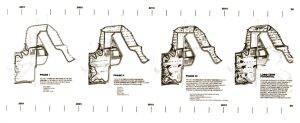

First, he repeatedly presents landscape as a two-dimensional construct, a horizontal surface in and on which processes occur. At no point does he consider an alternative that has actually led to the increased relevance of landscape architecture in performative urban design. Landscape is more commonly treated by theorists and practitioners within the discipline as a three-dimensional mélange of materials that is both influenced by and influences processes. This idea has been central to American landscape architecture since Olmsted used geology as a basis for the design of Central Park. It underlies the discipline’s last twenty years of success in challenging the twentieth-century dominion of civil engineers over urban hydrologic systems, using everything from rain gardens to ecologically performative park systems. Two-dimensionality may have served as a useful conceptualization for architects to explore concepts outside the building envelope, but it is vastly oversimplifying and inadequate for genuinely performative landscape proposals. Waldheim does not even consider the possibility of a three-dimensional landscape, although he is familiar with writing about the centrality of this concept by theorists and historians like Elizabeth K. Meyer and others. Omitting it serves the rhetorical purpose of positioning a two-dimensional landscape as an adequate representation for performative design, justifying the author’s effort to position landscape urbanism as the future of landscape architecture.
Second, Waldheim uses the word ecology as a kind of touchstone throughout the book, even titling his conclusion, “From Landscape to Ecology.” He also refers to the subdiscipline of landscape ecology, to the applied discipline of ecological planning, and to ecological modeling. But he does not define ecology until the end of his book, on page 181—and even there his definition is incorrect. He does not review any literature or ideas in ecological science or even refer to others who do scholarly work in this area except for a brief name-drop of Richard Forman, who has taught landscape ecology for thirty years at Harvard. Instead, Waldheim appears to use the term ecology as a mute prop throughout the book, presumably to confer a misleading degree of authority on his writing about the meaning and performance of designed landscapes. He refers to ecology alternately as an epistemological frame, a metaphor, a medium, and a model. And he reveals his lack of awareness of the actual discipline through claims that it treats natural systems as “indeterminate,” which is a distortion of its theory and epistemology. In spite of his rejection of empiricism, Waldheim claims a performative capacity for landscape urbanist designs—apparently on no other basis besides the critical approbation of what he calls “high design culture.”
Third, as any design theorist would, Waldheim assembles proposals and writing that establish exemplars for landscape urbanism and process-based design approaches in urban landscapes. But here he makes an unusual choice. Instead of organizing the ideas of the individuals who have written the most about process-based design, or been most involved in its inception and development, he chooses a specific subset of examples that are almost entirely authored by a small group of men. Most of the writing about process-driven, performative design in landscape architecture has been produced by women (for example, Anne Whiston Spirn, Catherine Howett, Joan Nassauer, Jane Wolff, and Elizabeth K. Meyer). Early examples of this type of design were produced by women (Spirn, Julie Bargmann, Anuradha Mathur, and Mia Lehrer, among others) as well as men.
How can it happen, then, that a book about landscape as a process-oriented, urbanistic idea has almost no women at all mentioned in the text? Exceptions prove the rule: two images are included of work by Kathryn Gustafson, without real commentary. Bargmann is mentioned once in passing, without comment. Nina-Marie Lister is one of the few women authors whose work is actually discussed, and she is an ecologist. What’s going on here?
In effect, the problem with Waldheim’s book is that it makes the reader complicit in an extended project of erasure: erasure of landscapes as three dimensional, of landscape architecture’s potential, of scientific ecology and ecological planning, and of women who have shaped the history and present state of the discipline. His divisive, almost tribal promotion of a small group of male contemporaries creates a social rift and exploits it for a self-promoting project to colonize what he presents as failed efforts and open territory. Landscape as Urbanism contains a deliberate distortion of ideas and practices within landscape architecture, ecology, and history. According to my definition of intellectual work and scholarship, it is anti-intellectual. Charitably, it could instead be called a manifesto. It would at least be honest for the author to present it as an explicitly gendered manifesto. Instead, Waldheim conceals the erasures and distortions incorporated in his vision of landscape urbanism under the pretense of scholarly writing. Particularly in our time, scholars cannot allow erasures and distortions to go unchallenged.
How to Cite this Article: Hill, Kristina. Review of Landscape as Urbanism: A General Theory, by Charles Waldheim. JAE Online. March 2, 2018. https://jaeonline.org/issue-article/landscape-urbanism-general-theory/.






